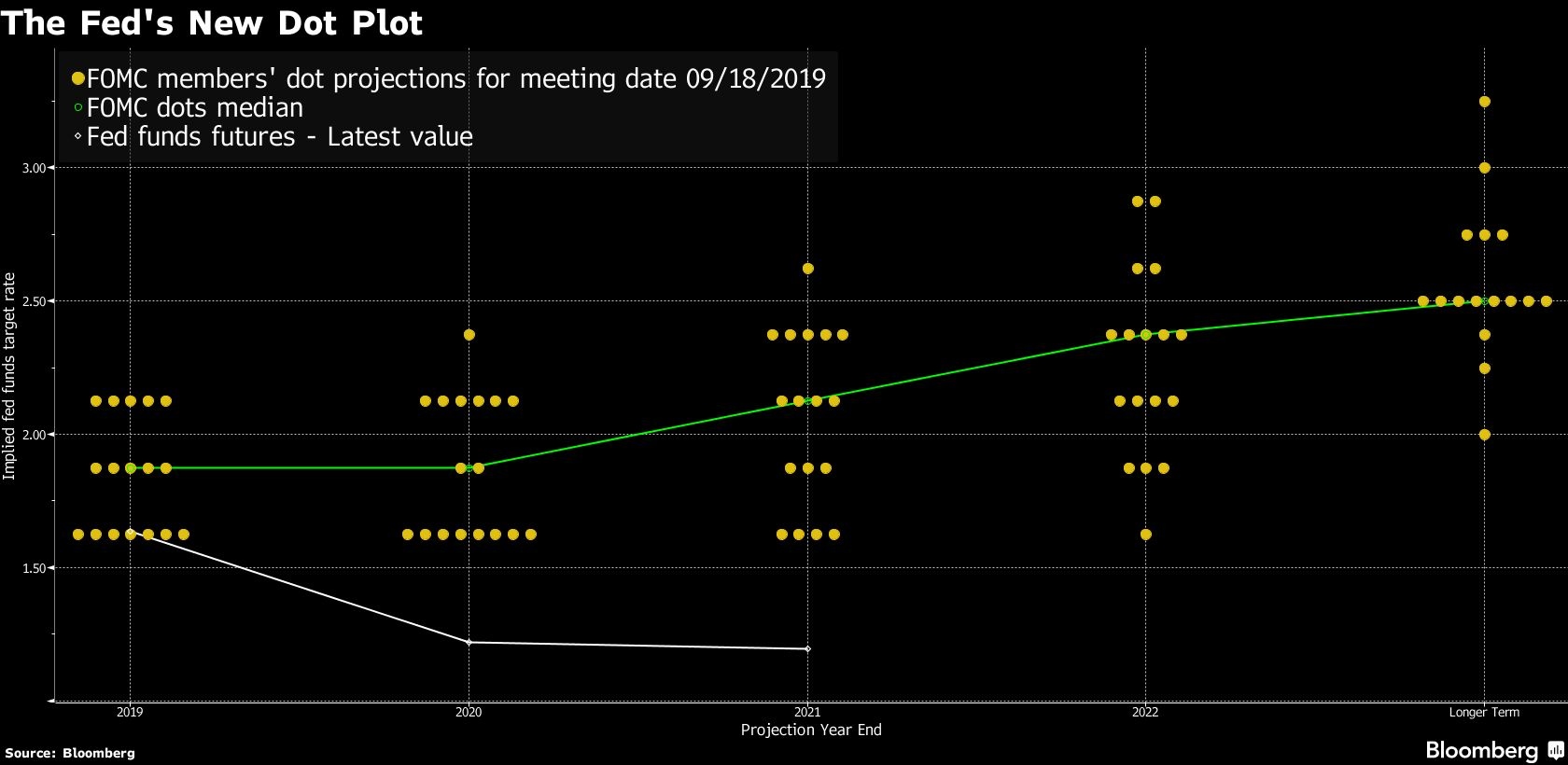Sep 18, 2019
Powell stresses solid U.S. outlook after Fed cuts rates again
, Bloomberg News
No reason for BoC to match Fed rate cut: Economist
Federal Reserve policy makers lowered their main interest rate for a second time this year and Chairman Jerome Powell said that “moderate” policy moves should be sufficient to sustain the U.S. expansion.
“We took this step to help keep the U.S. economy strong in the face of some notable developments and to provide insurance against ongoing risks,” Powell told reporters Wednesday after the Fed cut its benchmark rate by a quarter percentage point to a range of 1.75 per cent to 2 per cent. “Weakness in global growth and trade policy have weighed on the economy.”
Treasury yields rose, the dollar rallied and U.S. stocks reversed earlier losses after Powell made clear that policy makers did not expect to need deep rate cuts.
The chairman has been under relentless public pressure to reduce rates from President Donald Trump, who returned to Twitter minutes of the FOMC’s announcement to say policy makers had failed again by not cutting more and had “No ‘guts,’ no sense, no vision!”
The Federal Open Market Committee decision didn’t alter expectations among futures traders for another 25 basis-point cut this year.
Powell left the door open to “a more extensive sequences of cuts” if needed, but stressed this was not what officials expect. Instead, he described the situation as one “which can be addressed and should be addressed with moderate adjustments to the federal funds rate.”

Fed officials maintained their pledge to “act as appropriate to sustain the expansion."
“Although household spending has been rising at a strong pace, business fixed investment and exports have weakened,’’ the FOMC said.
Five officials in updated quarterly forecasts wanted to keep rates unchanged, while five saw a quarter point as appropriate this year and seven wanted a half point.
The Fed board also took a separate step to calm this week’s strains in money markets and avert harm to the economy, lowering the interest rate on excess reserves to 1.8 per cent. Earlier Wednesday the Fed injected US$75 billion of liquidity to ease a crunch, and key rates pulled back from elevated levels.
Global Risk
Powell is trying to sustain the expansion despite slowing global growth that’s been chilled by uncertainty over U.S. trade policy, fanning fears of recession. Manufacturing has been hit hard, particularly in Germany, which prompted the European Central Bank to ease policy last week.
Kansas City Fed chief Esther George and Boston’s Eric Rosengren dissented against the reduction, as they did in July, preferring to keep rates unchanged. There was a new dissent by James Bullard of St. Louis, who preferred a half-point cut.
Powell’s committee is split between those who don’t think cuts are needed because domestic spending is solid and those worried by global weakness and inflation running persistently under their 2 per cent goal.
“This statement seems carefully crafted to be silent on that question,” said David Wilcox, a former senior Fed economist and now at the Peterson Institute for International Economics in Washington. “There is no clue here as to whether this is the end of the line.”
Fed officials also released new quarterly forecasts:
- The median estimate saw the benchmark rate hold steady after today’s move at 1.9 per cent and remain there until the end of 2020, then rise to 2.1 per cent in 2021 and 2.4 per cent in 2022. That’s just under the Fed’s longer-run “neutral’’ federal funds rate estimate, which was unchanged at 2.5 per cent.
- The unemployment rate was forecast to end this year about 3.7 per cent, up a tenth from June, and finish 2020 at that level. The longer-run estimated jobless rate remained at 4.2 per cent.
- Participants continued to forecast that they wouldn’t reach their 2 per cent inflation goal until 2021.
The Fed’s back-to-back rate cuts reverse the tightening last year and follow a wave of easing this year by other central banks. In addition to the ECB, some analysts expect the Bank of Japan to act at its meeting Thursday.
U.S. central bankers, who added the reference to exports, worry that uncertainty over trade is denting investment and could slow hiring. Private-sector job growth has slowed from last year.
At the same time, consumption -- which accounts for most of the economy -- appears strong with retail sales rising 0.4 per cent in August and sentiment indicators relatively solid. Financial conditions have remained easy since the July meeting, although the dollar has resumed gains against major currencies.
— With assistance by Katherine Greifeld, Nancy Moran, Matthew Boesler, Christopher Condon, Katia Dmitrieva, Reade Pickert, and Vince Golle


